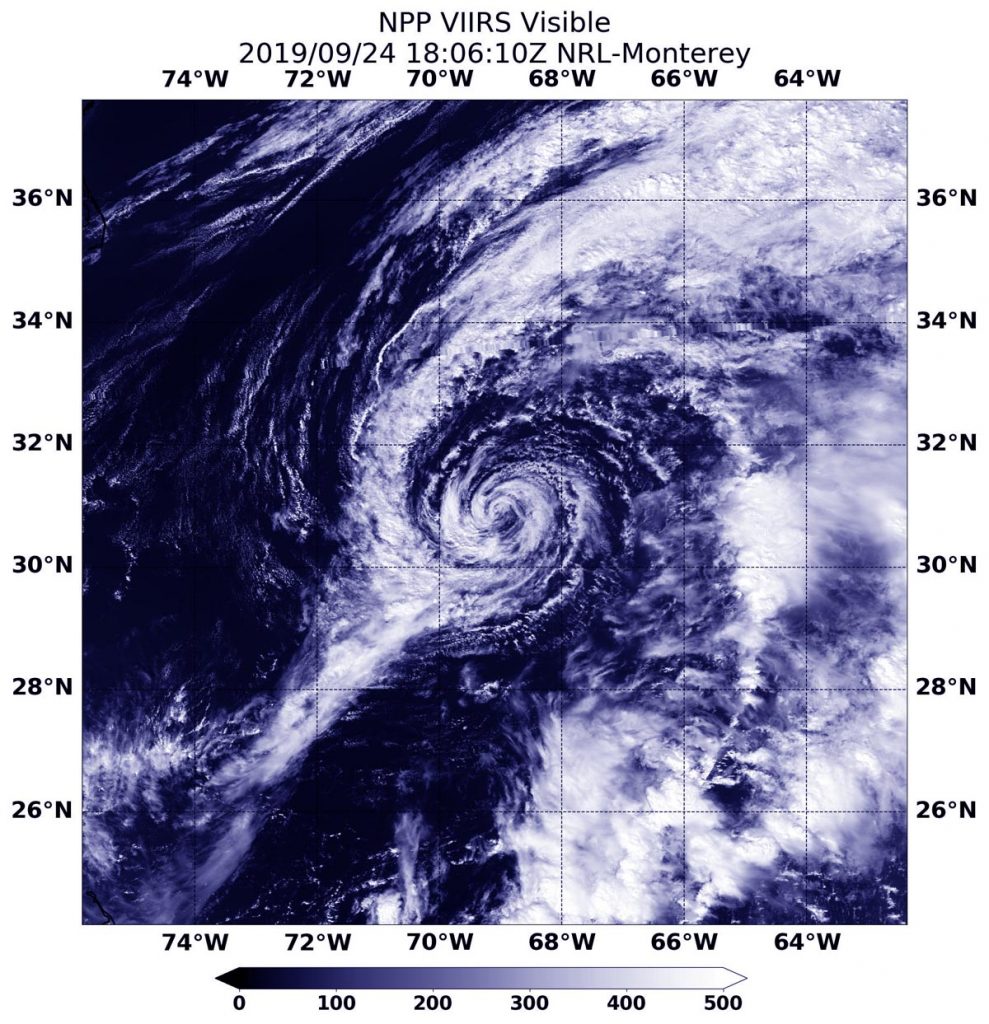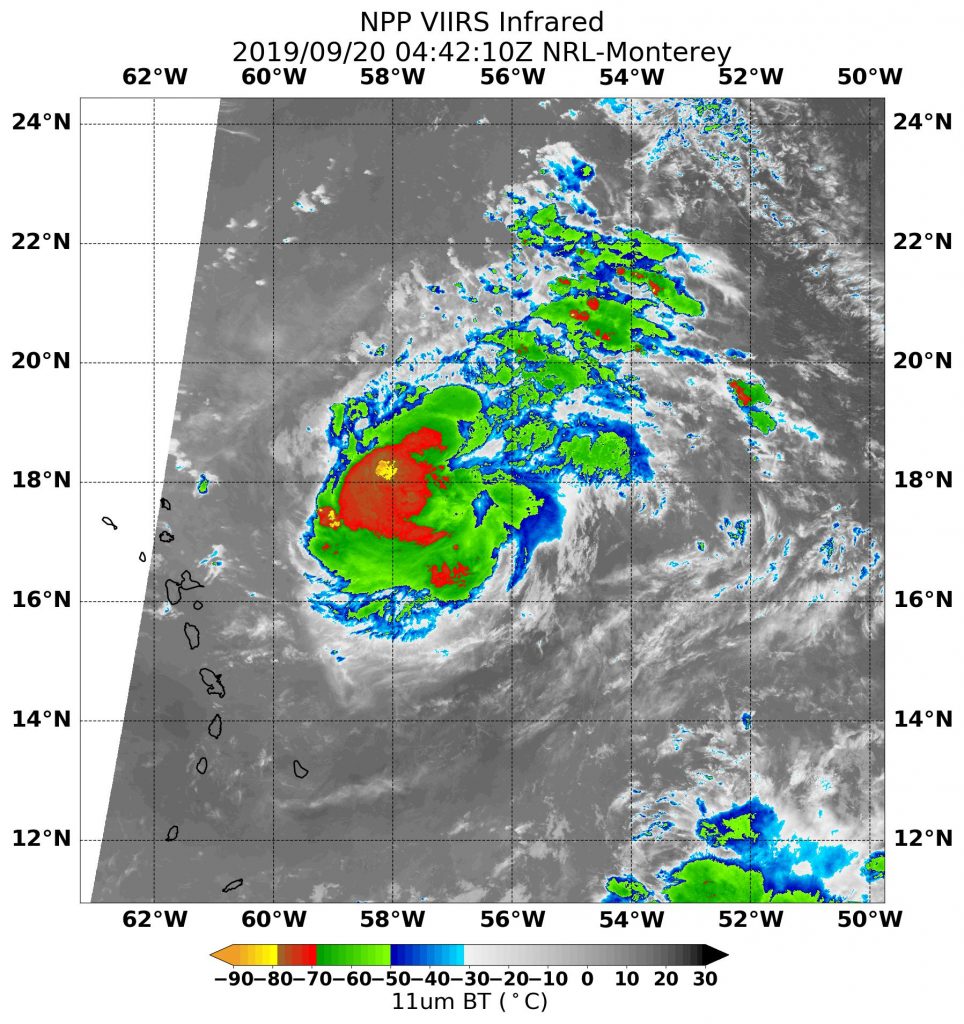Sep. 25, 2019 – NASA-NOAA Satellite Finds Jerry Now a Post-Tropical Storm
NASA-NOAA’s Suomi NPP satellite passed over Jerry and provided forecasters with a view of its structure that helped confirm it is now post-tropical.

On Sept. 25 at 12:48 p.m. EDT (1806 UTC), the Visible Infrared Imaging Radiometer Suite (VIIRS) instrument aboard Suomi NPP provided a visible image of Jerry. The VIIRS image showed the storm as swirls of clouds with no organized deep convection developing strong thunderstorms. NOAA’s National Hurricane Center or NHC said since around 11 a.m. EDT (1500 UTC) yesterday [Sept. 24], that there was a lack of strong thunderstorms which had been seen in earlier satellite imagery, including from NASA’s Aqua and Terra satellites. As a result, Jerry was designated as a post-tropical cyclone.
A Post-Tropical Storm is a generic term for a former tropical cyclone that no longer possesses sufficient tropical characteristics to be considered a tropical cyclone. Former tropical cyclones can become fully extratropical, subtropical, or remnant lows which are three classes of post-tropical cyclones. In any case, they no longer possesses sufficient tropical characteristics to be considered a tropical cyclone. However, post-tropical cyclones can continue carrying heavy rains and high winds.
A Tropical Storm Warning was in effect for Bermuda for Sept. 25. At 8 a.m. EDT (1200 UTC), the center of Post-Tropical Cyclone Jerry was located near latitude 32.0 degrees north and longitude 67.4 degrees west. The post-tropical cyclone is moving toward the northeast at near 7 mph (11 kph). Maximum sustained winds are near 45 mph (75 km/h) with higher gusts.
On the forecast track, the center of Jerry is expected to pass near Bermuda later today. Jerry is expected to produce 1 inch or less of rainfall across Bermuda through tonight. Swells generated by Jerry will continue to affect Bermuda during the next few days. Gradual weakening is expected during the next few days.
Hurricanes are the most powerful weather event on Earth. NASA’s expertise in space and scientific exploration contributes to essential services provided to the American people by other federal agencies, such as hurricane weather forecasting.
For updated forecasts. visit: www.nhc.noaa.gov





